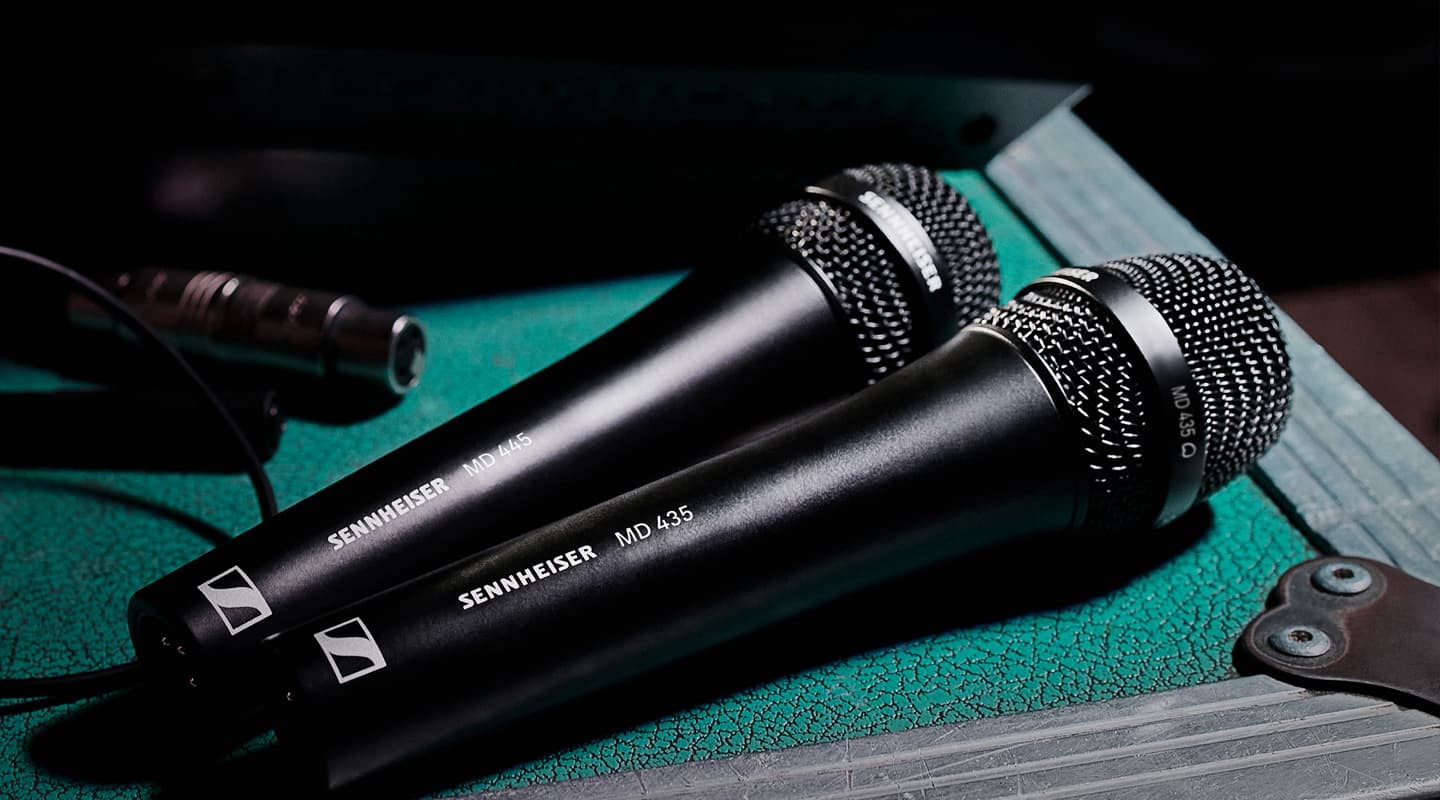
Review: Sennheiser MD435 & MD445
Two new handheld additions to Sennheiser’s MD series of primo microphones.
Sennheiser recently celebrated 75 years manufacturing microphones and the MD prefix has been there from the beginning — the original MD1 was produced in 1946. You wouldn’t see one of those outside of a museum but current versions of the classic MD421 (1960) and the even more classic MD441 (1971) are still available and still great mics. The same applies to the MD431 (Profipower) from the 1980s.
The last 20 years has seen the rise of the successful Sennheiser Evolution series. The entry level e835/845 handheld dynamics offer good value, the mid-priced e935/945 dynamics are a common sight on professional stages. Ross Wilson from legendary Oz band Daddy Cool was using an e945 last week at the Theatre Royal and he sounded great. Then there’s the problem-solving e906 guitar cab mic and convenient e904 tom mics. The top of the range dual-capsule e965 condenser happily competes with the highest quality condenser vocal mics.
LIKE MIC
So the all-new Sennheiser MD435 and MD445 microphones come with some expectations… that were not initially fulfilled by their looks. They lack the distinctive visual stylings of the MD421/441 (even the 431) opting instead for a more conventional design. This is not necessarily a bad thing from a functional perspective, both the 421 and 441 are instantly recognisable but they are somewhat awkward shapes for handheld use. The MD435/445s look is understated and it’s heavyish at 350g but well balanced and the finish offers some grip, so they’re comfortable in the hand and easy to use. Bling-free and finished in matte black with a slightly gloss head, you’d only know they were Sennheisers by the names printed on the body and band around the grille. The MD445 has a smaller top half of the head, otherwise its appearance is virtually identical to the MD435.
Under the head, the new MD mics both start with the capsule from the discontinued MD9235 handheld wireless vocal mic, sold as a quality general-purpose mic and known for being popular with hip-hop and R&B artists. The capsule features an aluminium-copper alloy voice coil that is lighter than conventional copper coils so it can move the capsule’s one-inch diaphragm faster for more accurate resolution, particularly noticeable across the vocal and high frequency range. The capsule is housed in a new spring-mounted suspension system and it works. The first thing I noticed when I plugged them in was the low handling noise — it’s low in level and unobtrusively muted in tone. And the same for both models. After that they differ.
NEED TO KNOW
Sennheiser MD435 & MD445
Dynamic Microphones

THE MD435
The MD435 is easy to use with a strong professional sound. It’s bright rather than shiny, with a frequency response that is essentially flat from 150Hz up to 2kHz, before rising rapidly to be adding nearly 10dB at 5kHz before dropping back to about 5dB extra between 8kHz – 12kHz, then rolling off quite sharply. This boost delivers a big part of the crisp, clear Sennheiser sound that has made the e935/945 and MD421 popular. This brightness is well balanced by a thick low end with a controlled proximity effect in close to the mic.
Pop resistance is good, although it doesn’t like wind or heavy breathing much. The high frequencies are pleasingly smooth and sibilance is not accentuated. The emphasised top and big bottom up-close leaves the mic sounding somewhat scooped in direct comparison to other popular vocal mics but in use it sounds rich and produced.
The polar pattern is a narrowish cardioid shape that’s sharply maintained across the mid frequencies, contributing to the high resistance to feedback on stage, but it’s still forgiving if the singer moves around while performing. The MD435 is a natural live vocal mic suitable for any stage, interview or broadcasting duties.
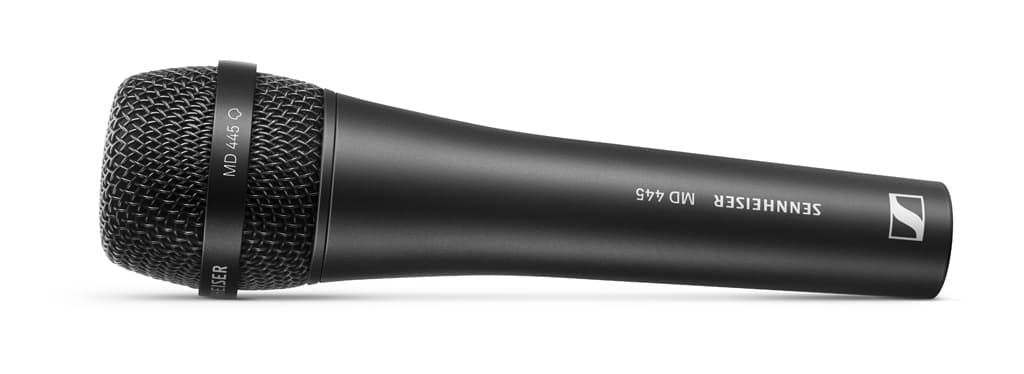
THE MD445
The 445 is different. It <looks> normal enough but when you speak or sing into it you will hear the difference. The mic produces a surprising output level for a given input. It startled me the first time I spoke into it in front of speakers, the low handling noise combined with the high output delivered more volume than I was expecting — like a car with a powerful engine and a sensitive throttle. Part of this high output is physical: the head of the mic is almost flat and the diaphragm is right underneath the grille with only enough room for a thin layer of pop-busting foam, so if you’re right up on the mic you’re only a couple of millimetres from the diaphragm, and it sounds close and present.
The other contributor is the remarkably tight hyper-cardioid polar pattern with its extreme rejection of sound arriving from the sides and rear. If you’re not in the sweet spot with this mic, not much happens at all but up close and in front of the mic, it puts you in your own world of sound. Moving around the mic to the side, the rejection happens suddenly and dramatically, it sounds like some phase trickery going on to me, and it’s very effective.
CAN COMPETE
The MD445’s frequency response is more aggressive than the MD435, rising steadily from around 200Hz to 2kHz before an even larger boost centred around 5kHz. In the lower frequency range there’s slightly less level in the low mids and not as much proximity effect. The combination of the brightened response and the high rejection to off-axis sound make the MD445 ideal in situations where the vocal is hard to hear due to low input or high ambient levels. The tight pattern and enhanced rejection allows for almost physics-denying levels in the stage monitors. It’s interesting to hot-swap it with other mics. It’s no more likely to feed back but it’s much louder. Depending on the voice it could be too bitey in the high-mids if you don’t need so much cut-through. The only time I haven’t liked the e935/945 so much is on strident female vocals, where they can get hard sounding if the voice has a lot of 3kHz – 5kHz in it. The flatter response of the MD441 or e965 can be better on those voices.
YOU AM EYE FOR DETAIL
You Am I guitarist Davey Lane was a willing test pilot when he performed at the Theatre Royal Castlemaine. Accustomed to playing on loud stages he was performing solo on this occasion but still wanted plenty in the wedges. I had my preferred Neumann KSM8 set up but it didn’t take long before he was requesting more level in the wedges. I installed the MD445 and that solved the volume problem straight away. It was a lot more focussed and easier for him to hear. With a clear PA in an ideal outdoor setting I didn’t really need the cut the mic delivered, the MD445 would do its best work in difficult acoustic situations, but it sounded good — when he was right in front of the mic, the slightest turn of the head to look at the neck of his guitar and poof, like magic he was gone.
I was thinking about that when Davey started to feel the 445 was somewhat bass shy. The subdued proximity effect perhaps not giving him that close-up boominess many singers use as part of their sound. I was happy to swap to the MD435 rather than tell him he couldn’t turn his head for the performance and, like Little Bear’s porridge, it proved to be ‘just right’. Smooth with strong presence in the FOH, our artist found it more to his liking up close and I could still hear him when he strayed slightly from the mic. As an indication of the output of the MD445 I raised the channel fader nearly 10dB when I swapped to the MD435.


STATE OF THE UNION
Immigrant Union were on the following week, great band, and one of their singers, Peter Lubulwa was happy to try the MD435. The other two singers had their own Shure Beta 57s so it was a good comparison. The MD435 is twice the price and you could hear the difference, the high frequencies were smoother with good detail, less boxiness in the low-mids and less bark with good intelligibility in the high mids… it sounded more expensive.
Both mics are available as screw-on wireless capsules with standard threads for use with wireless systems. Accessories are up to standard. The padded case offers good protection and is big enough to hold the mic with clip attached. The mic slips in and out of the clip in a satisfying way and it holds the weight securely.

The MD label is used for premium Sennheiser microphones. The MD435/445 microphones sell at a new price point, below the MD421 and MD441 but still ‘up there’ for handheld dynamic mics. I expect to see more of the MD435 around the traps, due to its general purpose nature and friendly character. The MD445 is hardcore with a more limited appeal but could be greatly appreciated by bands with the problem of a low-output singer(s) with a loud band.
MD 435 Technical Data
Transducer principle: dynamic
Frequency response: 40–20,000Hz
Pick-up pattern: cardioid
Diaphragm diameter: 25.4mm / 1”
Sensitivity (free field, at 1 kHz): 1.8mV/Pa; -54.9dBV/Pa
Max. SPL (at 1 kHz): 163dB
Equivalent noise level: 17dB(A)
Dynamic range: 146dB(A)
Nominal impedance (at 1 kHz): 245Ω
Min. terminating impedance: 1kΩ
Dimensions: ⌀ 47.5mm x 181mm
Weight: 350g

MD445 Technical Data
Transducer principle: dynamic
Frequency response: 40–20,000Hz
Pick-up pattern: high-rejection, super-cardioid
Sensitivity (free field, at 1 kHz): 1.6mV/Pa; -55.9dBV/Pa
Max. SPL (at 1 kHz): 163dB
Equivalent noise level: 18dB(A)
Dynamic range: 145dB(A)
Nominal impedance (at 1 kHz): 245Ω
Min. terminating impedance: 1kΩ
Dimensions: ⌀47.5mm x 174mm
Weight: 329g
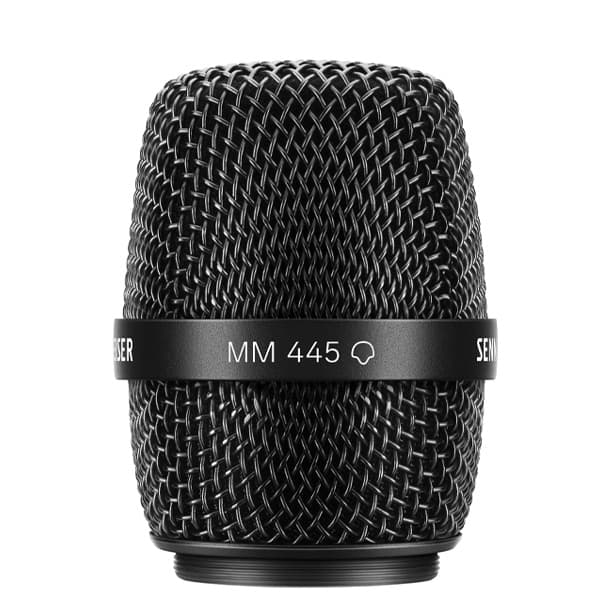



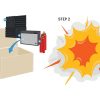
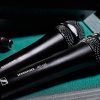


















I love a review where someone who really knows what they’re talking about uses the product in a professional situation. Outstanding review.